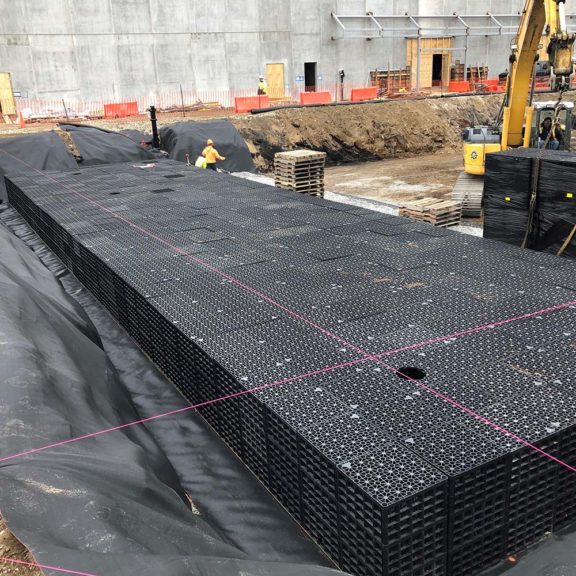
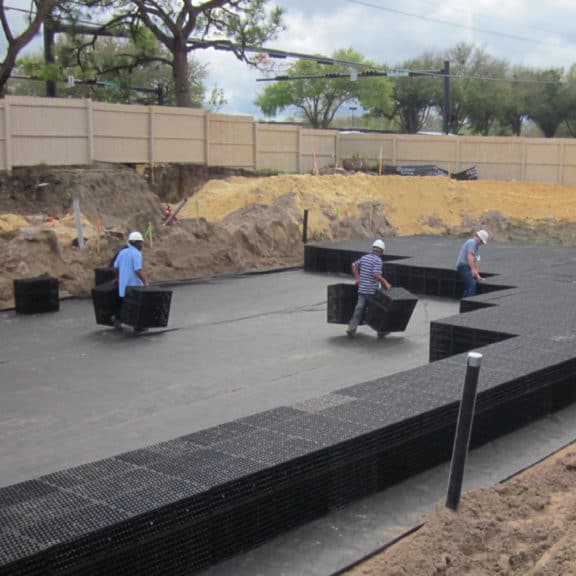
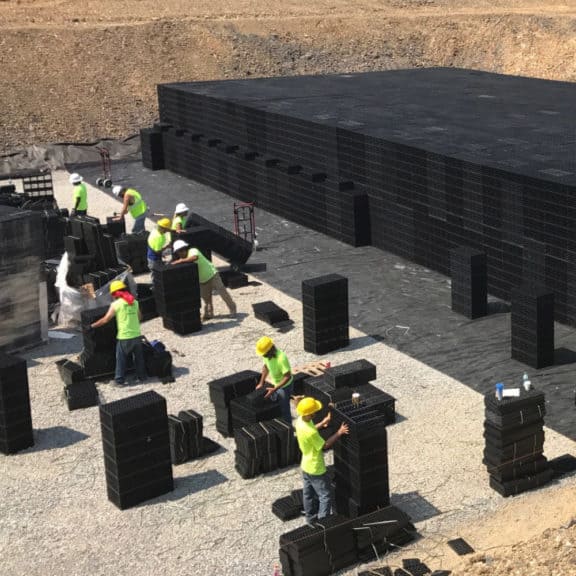
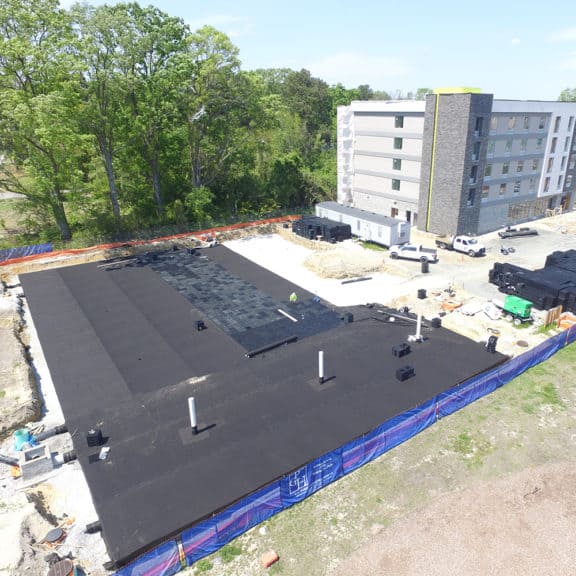
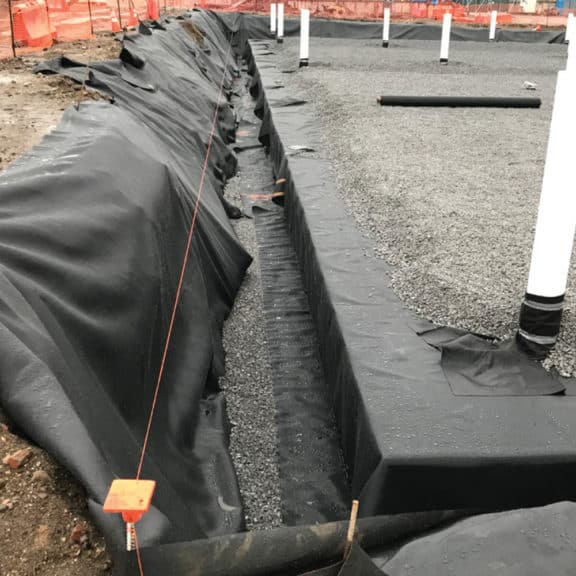
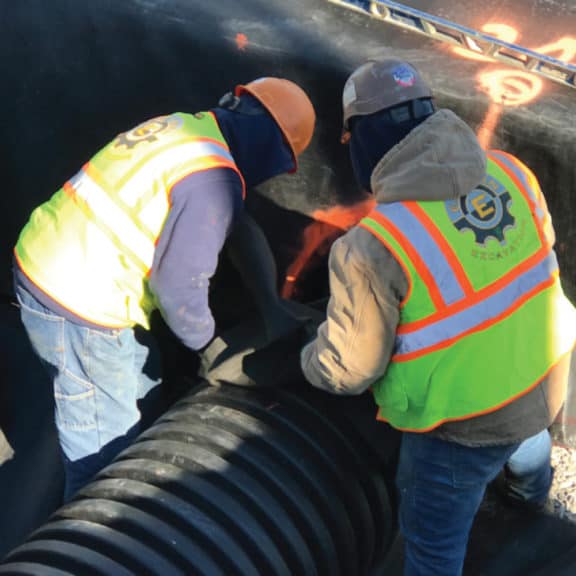
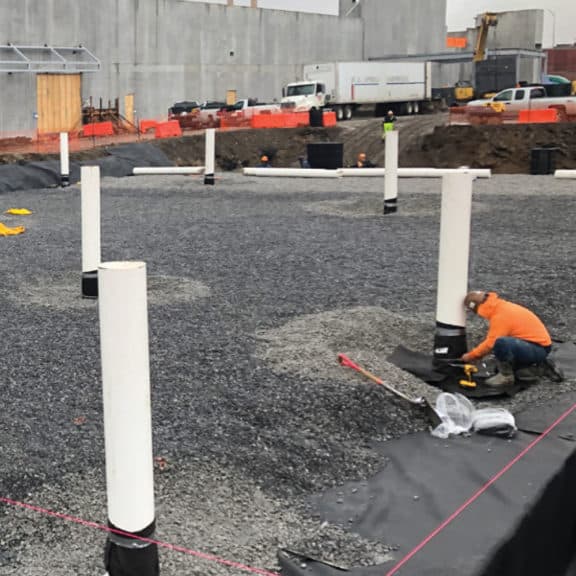
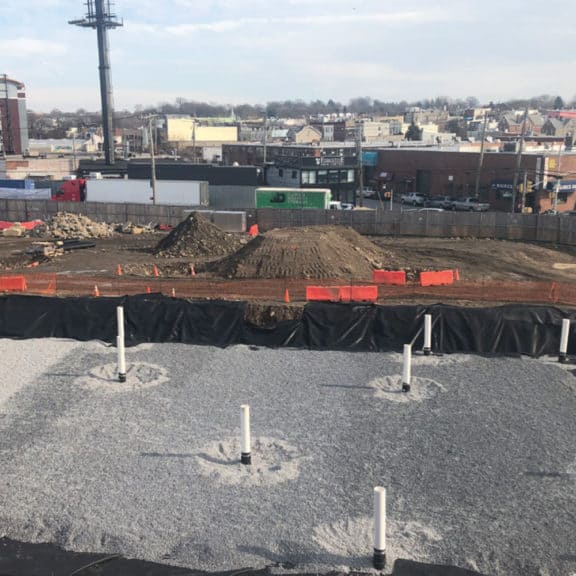
Use our free tool to easily calculate the required storage capacity for your tank.
R-Tank® Stormwater Modules
Underground Modular Stormwater Storage
R-Tank Stormwater Modules provide both an efficient and versatile underground stormwater storage system. They assist with stormwater detention, infiltration, and rainwater harvesting applications. Furthermore, with 95% void space, this system reduces the underground stormwater storage footprint. As a result, it resolves utility conflicts and frees up space for future expansion. Due to the patented design of the system, it is one of the most efficient systems on the market. Comparatively, it is a cost-effective alternative in comparison to stormwater basins and other underground systems.
Utilize R-Tank Stormwater Modules in creative applications.
The versatility of an R-Tank system is vast. For example, customers use it for linear green infrastructure, under permeable pavers and soil media for storage enhancement, and in combination with pump equipment for harvest and re-use.
Five different module configurations (LD, HD, SD, UD & XD) range from 2” to over 7’ tall. In addition, the modules deliver support for HS-20 and HS-25 traffic loads, with cover depths that range from 6 inches to over 16 feet.
A critical component of any R-Tank design is the geotextile fabrics that wrap the tanks. In fact, the fabrics change the application. For instance, depending on the fabric, R-Tanks can discharge the stormwater runoff into a drainage system, release the stormwater back into the ground, or contain the water for future use.
To sum it up, here are a few features of R-Tank Stormwater Modules:
- High-capacity (95% void space) and high-strength
- Offers HS-20 and HS-25 support for traffic loads with cover depths from 6″ to over 16′
- Modular design installs easily in most footprints
- Increased infiltration and ex-filtration
- Easy-to-transport
- Lightweight and quick to install
- Permanent and maintainable storage volume
- Purchase pre-assembled or easily assemble the system on-site
Hydrocad® Stormwater Modeling System
Model R-Tank systems, easily, with the HydroCAD® Stormwater Modeling System. This streamlines the analysis of the system’s behavior in a drainage and stormwater management system. HydroCAD includes custom rating curves for these devices, which when paired with the “special outlet” capability easily define the device’s stage-discharge characteristics.
What is the void ratio of R-Tank?
Most R-Tank Stormwater Modules are 95% void, including the HD, SD, and UD lines. However, the XD modules have more plastic. As a result, they are 90% void. Refer to the back page of the R-Tank Brochure for more information.
What is the life expectancy of R-Tank?
R-Tank stormwater modules are polypropylene, one of the most inert materials available. As a result, they resist rot and corrosion in addition to chemicals most commonly found in soils. Multiple factors affect the life of a system, however, the most significant of which is creep. Creep is the tendency of plastic to deform over time. Because of the 180-day creep test methodology described in CIRIA C609, we know the modules provide a service life of at least 40 years.
How long has R-Tank been on the market?
Underground polypropylene modular stormwater systems have been in use around the world since the early 1990s. In the United States, however, the technology was introduced in the early 2000s. Furthermore, the R-Tank System was first used internationally in 2009, and then it was first sold in the United States in 2011.
What is the recycled content?
R-Tank is 100% post-industrial polypropylene.
Since the sides of the R-Tank are open, how does backfill stay out of the R-Tank?
R-Tank is wrapped with a geosynthetic material prior to backfill. This material may include a non-woven geotextile, woven geotextile, impermeable liner, or microgrid depending on the application.
What Geotextiles do you recommend to wrap the R-Tank System?
There are four different types of materials to wrap an R-Tank system:
- Nonwoven Geotextile is the standard material for most projects.
- Woven monofilament is for most infiltration applications.
- Geomembranes (Polyethylene and PVC are most common) retain runoff in the system for harvesting applications, as well as prevent infiltration where there are concerns about karst or groundwater contamination.
- Combine microgrids with stone backfills in bioretention and other similar applications.
Can I use R-Tank beneath a parking garage or building to meet the storage requirements?
R-Tank has been successfully used beneath a number of parking garages and buildings. However, this is a highly technical application and we suggest you work directly with our Ferguson Waterworks experts.
What’s the best way to pre-treat runoff?
Use a two-step approach to pre-treatment:
- Use premium stormwater filters and screens throughout the upstream drainage network in order to prevent both heavy sediment and debris from entering the R-Tank.
- In addition, use a Treatment Row inside the R-Tank to trap and segregate materials that circumvent the Trash Guard Plus.
For more information on pre-treatment, review the R-Tank Maintenance Tech Note.
Can R-Tank be used in leach fields?
R-Tank is usable in many different types of leach fields. Made from polypropylene, it is resistant to many chemicals and is an ideal system for industrial leach fields. When allowed by local regulations, R-Tank is an excellent choice for residential septic leach fields, as well.
Can R-Tank support AASHTO HS20 and HS25 traffic loads?
Each of the R-Tank stormwater modules (HD, SD, LD, and XD) support HS-20 and HS-25 load ratings with different cover requirements. For more information, contact your local Ferguson representative.
What cover is needed to support traffic loading?
An independent engineering firm reviewed 3rd party testing on each of the R-Tank modules and developed loading models in order to recommend minimum cover requirements for various loading classifications. These models are available to designers and include the following minimum cover depths to support AASHTO HS20 loading:
- Heavy Duty (HD) – 20″
- Super Duty (SD) – 18″
- Ultra Duty (UD) – 12″ (with stone backfill) or 14″ (with sand backfill)
- Extreme Duty (XD) – 6″
For more information, contact your local Ferguson representative.
How do you maintain the system?
There are three different types of maintenance, in fact, depending on the features of the system’s design:
- Most systems include pre-treatment structures within the drainage system upstream of the R-Tank. These prevent contamination and require regular maintenance.
- Systems designed and built after 2018 may include a Treatment Row which is accessible through an adjacent drainage structure. Treatment rows trap both sediment and debris that bypasses the pre-treatment structures and require maintenance with standard jet/vac equipment.
- Most systems include Maintenance Ports throughout the footprint of the system. These backflush the system by injecting water through the ports to resuspend sediments which is then removable with standard vac equipment.
What equipment is necessary to clean the R-Tank System?
Clean the system with standard jet/vac equipment. There are no special or proprietary components required for the process. For step-by-step instructions on maintaining an R-Tank system, contact your local Ferguson representative for a copy of the Operation, Inspection, and Maintenance Guide.
Is a specialty or certified contractor needed to maintain the system, or can town/county crews perform the maintenance?
While there are contractors familiar with the process available to assist R-Tank System owners, many public works and/or municipal maintenance crews have the equipment and experience necessary to maintain it. For step-by-step instructions on maintaining an R-Tank system contact your local Ferguson representative for a copy of the Operation, Inspection, and Maintenance Guide.
How much does it cost to clean the R-Tank System?
Costs vary widely and are dependent on several variables such as the project’s location, design, and size of the specific system. For the most accurate pricing, provide details of the system from the original project plans.
How often must the system be cleaned?
At a minimum, inspect systems annually and clean them when sediment accumulation reaches specific levels based on the configuration of the specific system. Experience shows that the most cost-effective plan is to concentrate maintenance efforts on the pre-treatment systems, therefore, minimizing the need to maintain the full R-Tank system.
Do the modules come assembled?
R-Tank modules are typically delivered unassembled. Accordingly, they are assembled on-site by the customer. In order to better support our customers, we provide training on proper assembly.
How do you connect storm pipes to R-Tank?
Most pipes are butted to the side of the R-Tank and then sealed with a geotextile boot. Pipes connecting into the Treatment Row should be 12″ SDR35 PVC and should be inserted 3-6″ into the opening.
Is it acceptable to use duct-tape for pipe boot connections instead of steel clamps?
>R-Tank modules come with pipe boot kits (one for each pipe connection) that include two stainless steel clamps. Duct tape can temporarily connect the boot flap to the geotextile enveloping the R-Tank, but the clamps must seal the neck of the boot around the pipe.
Do you have to use stone to backfill around the R-Tank?
There are multiple backfill options for R-Tank. Such as AASHTO #57 stone, which is very common (and often used as supplemental storage capacity). In addition, there are sand options that meet the backfill material specification. See section 2.03 of the R-Tank Specification for more details.
Why does the perimeter stone around the R-Tank need to 2 ft wide?
Providing 24″ of clearance around the perimeter of the system allows adequate access for the compaction of backfill materials using vibratory equipment such as a trench roller or plate compactor. However, there are unique applications that do not require a 24″ perimeter for backfill. Contact your local Ferguson representative if you have a unique project situation.
Why do self-compacting backfill materials require vibratory compaction?
Vibratory compaction of backfill materials is critical to the stability of the system. In addition to aiding in the consolidation of the backfill materials (which then helps to mitigate the potential for differential settlement), the vibratory action of the equipment eliminates micro-gaps between modules. As a result, this makes the system of individual modules substantially stronger in the process.
How quickly can I get material?
Based on the size of the project and the types of modules required, lead times vary. However, it is our goal to supply materials as quickly as you need the, but proper planning is critical in order to meet your timeline. Contact your local Ferguson representative for more information.
Can I use R-Tank to get pollutant removal credit?
When using the R-Tank as an infiltration system, pollutant removal credits typically apply. Additionally, some states allow treatment credits for R-Tank Treatment Row. Contact your local Ferguson representative for more information.
I have karst/contaminated soils, how does R-Tank prevent infiltration?
When needed, the R-Tank system is wrapped in an impermeable geomembrane. As a result, the geomembrane prevents stored water from infiltrating into the surrounding soils. Furthermore, in these applications, 100% of the stored water exits through an outlet pipe.
Can R-Tank be used on sites with high ground water tables?
R-Tank is used on hundreds of sites with high water tables. Because of the high void space of the R-Tank, most systems can avoid conflict with the water table. However, R-Tank is also used where it interfaces with the water table. Some of these systems allow groundwater to enter the modules and exit the system through the drainage network. In comparison, other systems prevent groundwater intrusion which requires additional engineering in order to manage the buoyant forces of the groundwater. Contact your local Ferguson representative for design assistance, especially in scenarios where groundwater is likely to affect the R-Tank installation.
When designing R-Tank Systems that will be affected by seasonally high ground water tables, does the R-Tank resist uplift, or should it be braced against flotation?
Some R-Tank systems use cover materials to balance the uplift forces of groundwater. Meanwhile, other projects require more elaborate cover cross-sections. Contact your local Ferguson representative for design assistance in scenarios where groundwater is likely to affect the R-Tank installation.
Connect With An Expert Today
Case Studies
From solving challenging application issues to severe weather response, there is no better partner than Ferguson Waterworks. Let our past performance speak for itself.
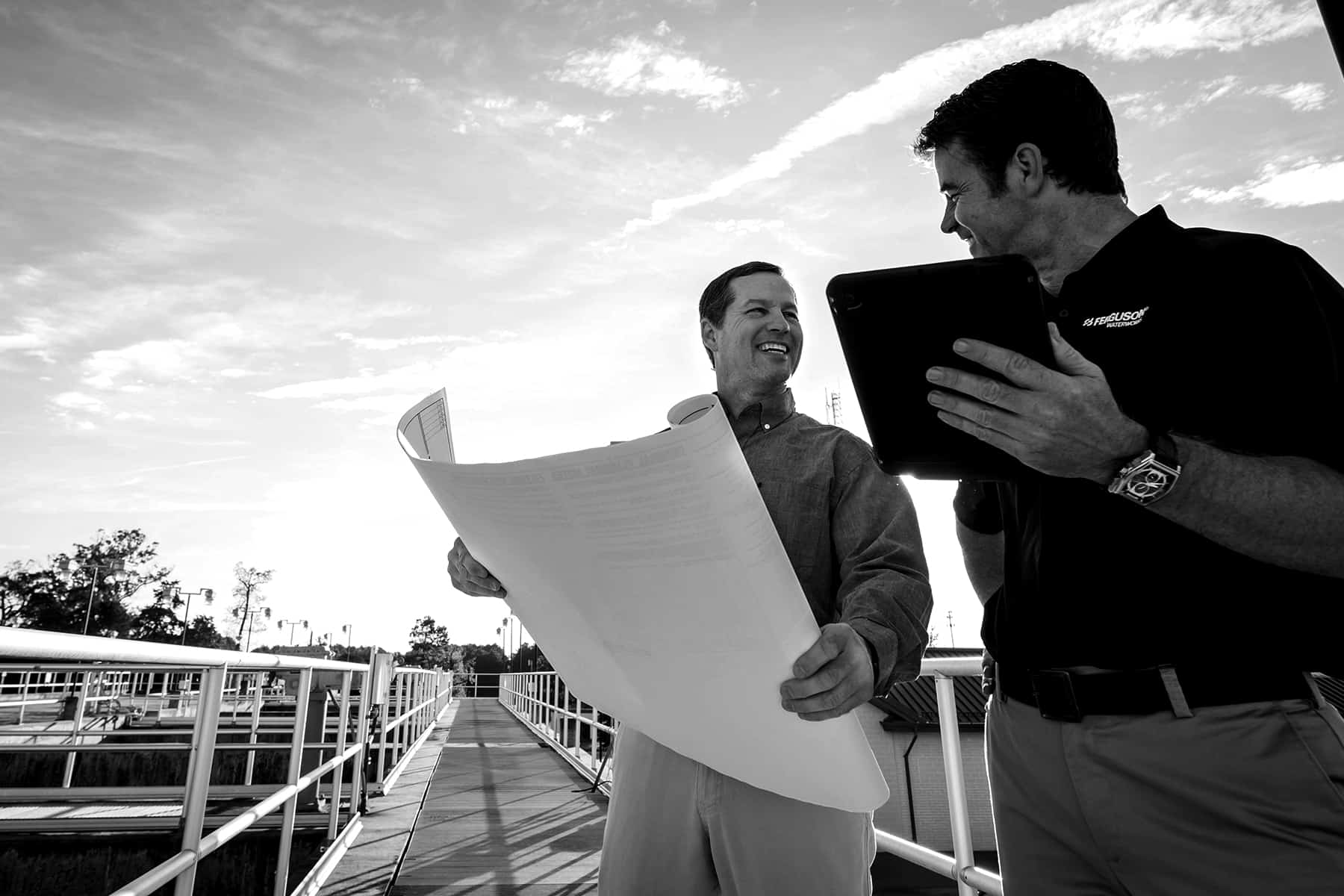

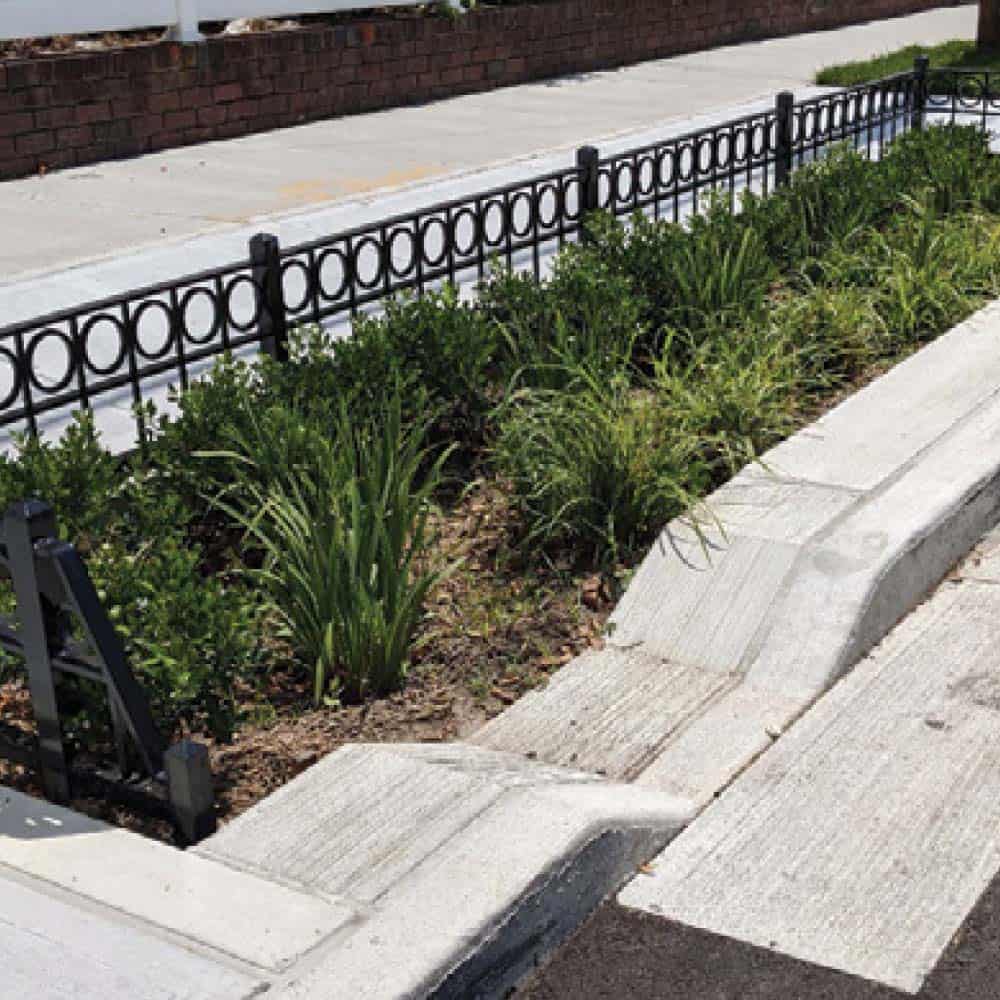 The Urban Raingarden™
The Urban Raingarden™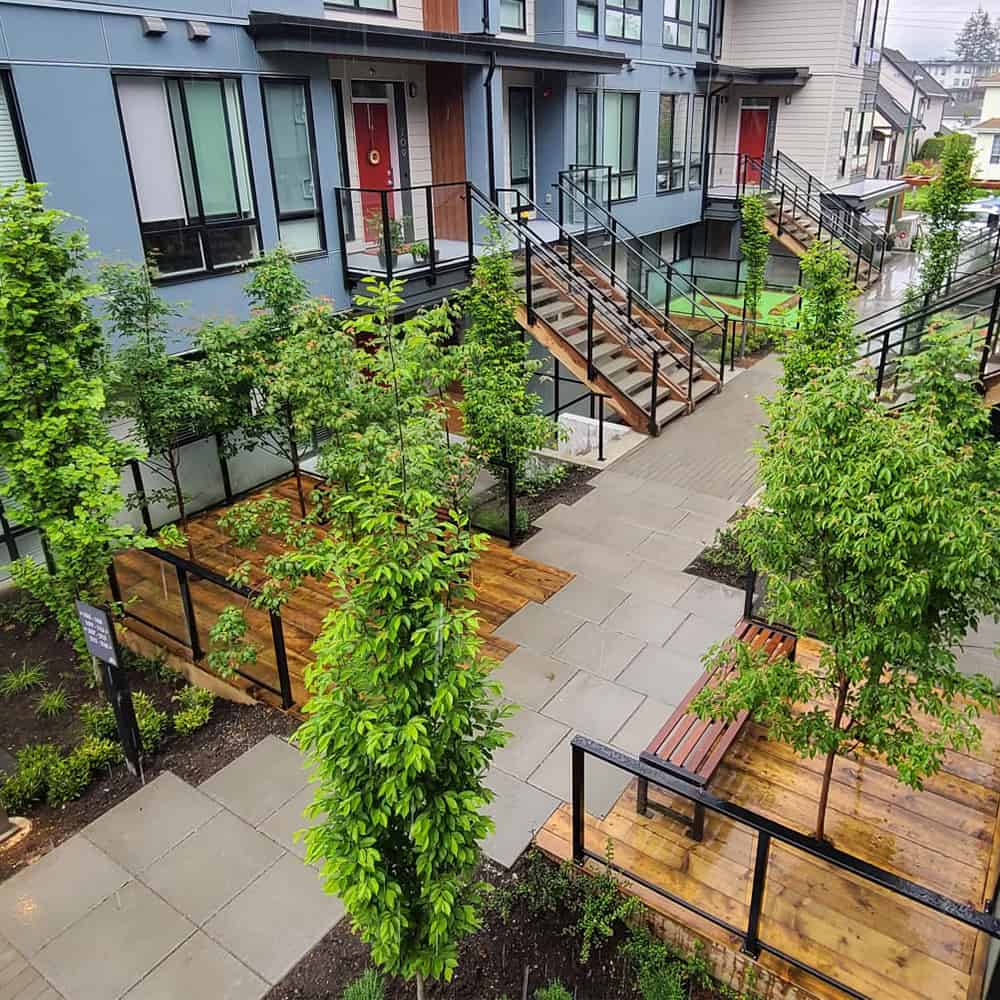 Stratavault™
Stratavault™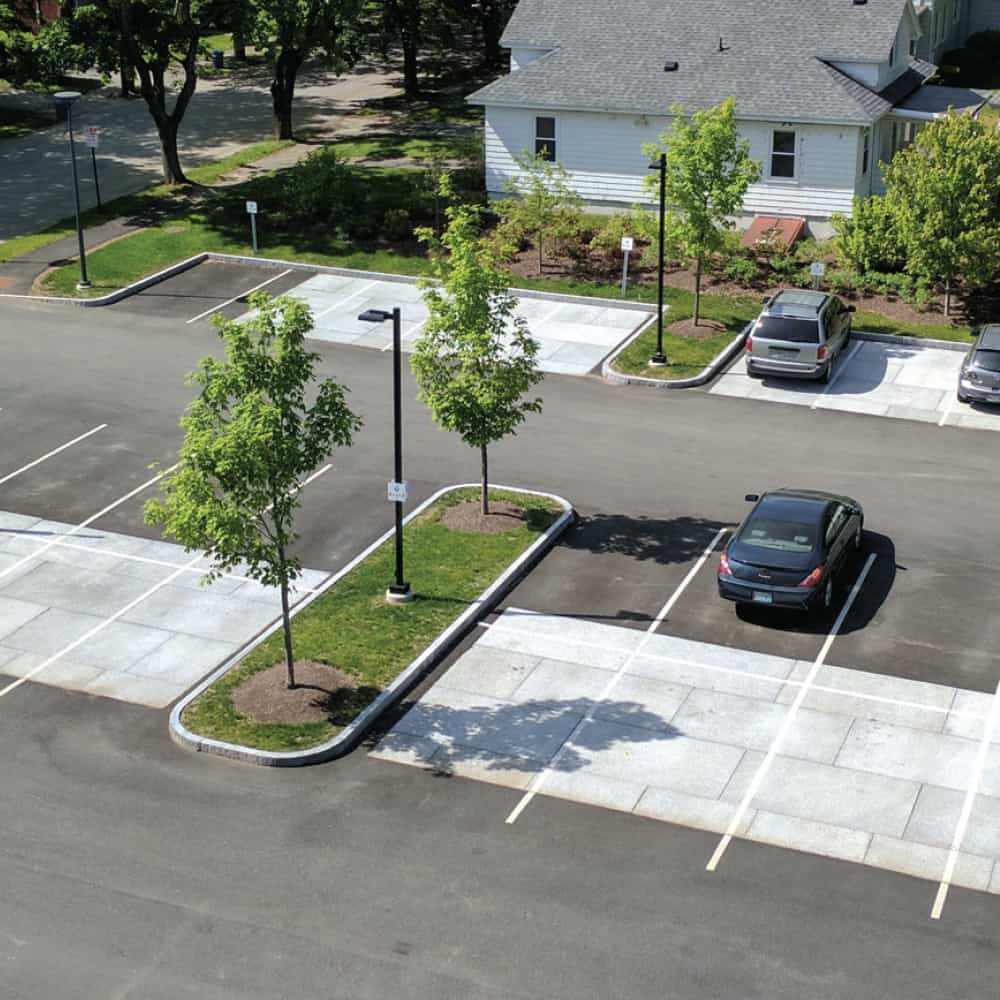 STORMCRETE®
STORMCRETE®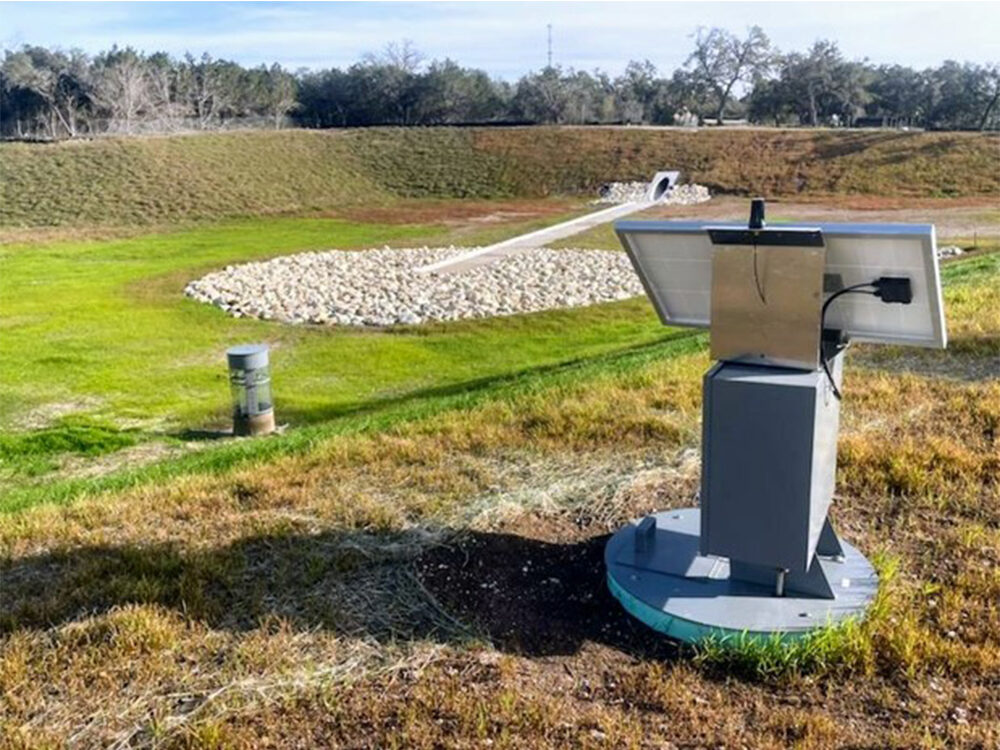 smartPOND™
smartPOND™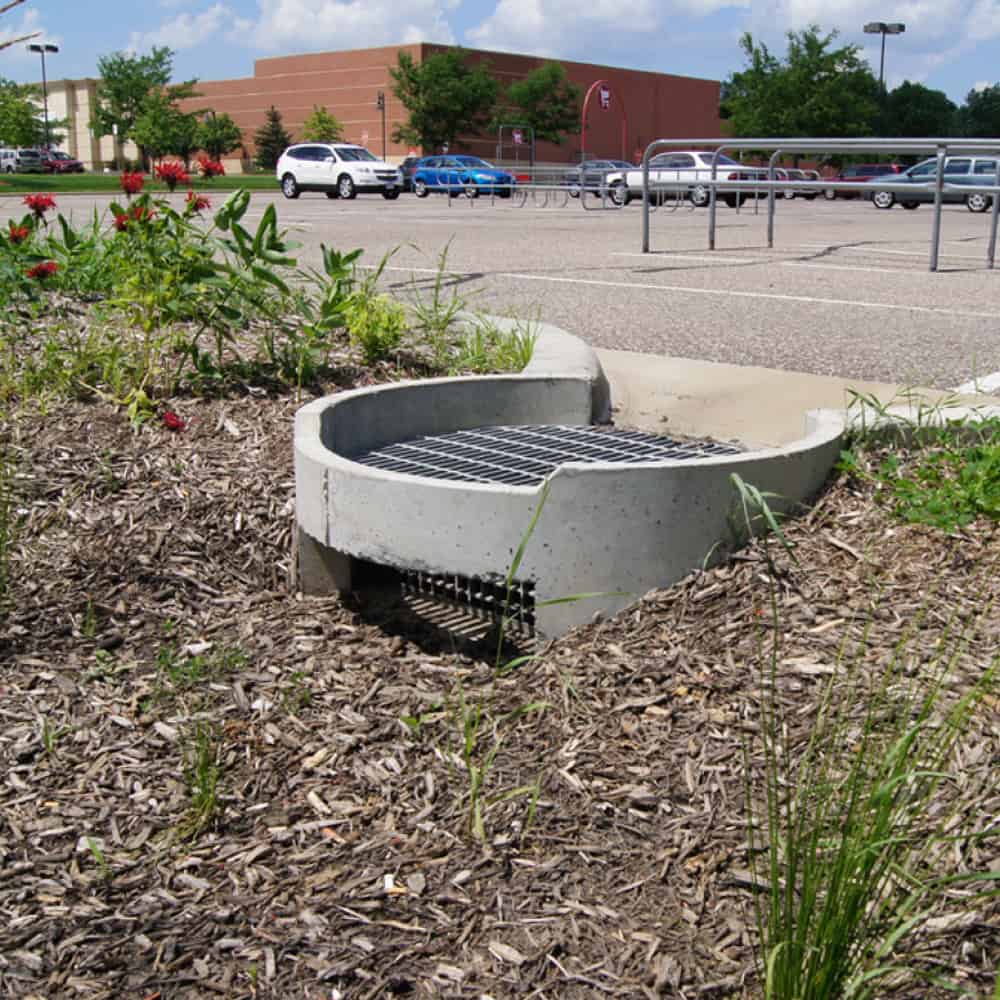 Rain Guardian
Rain Guardian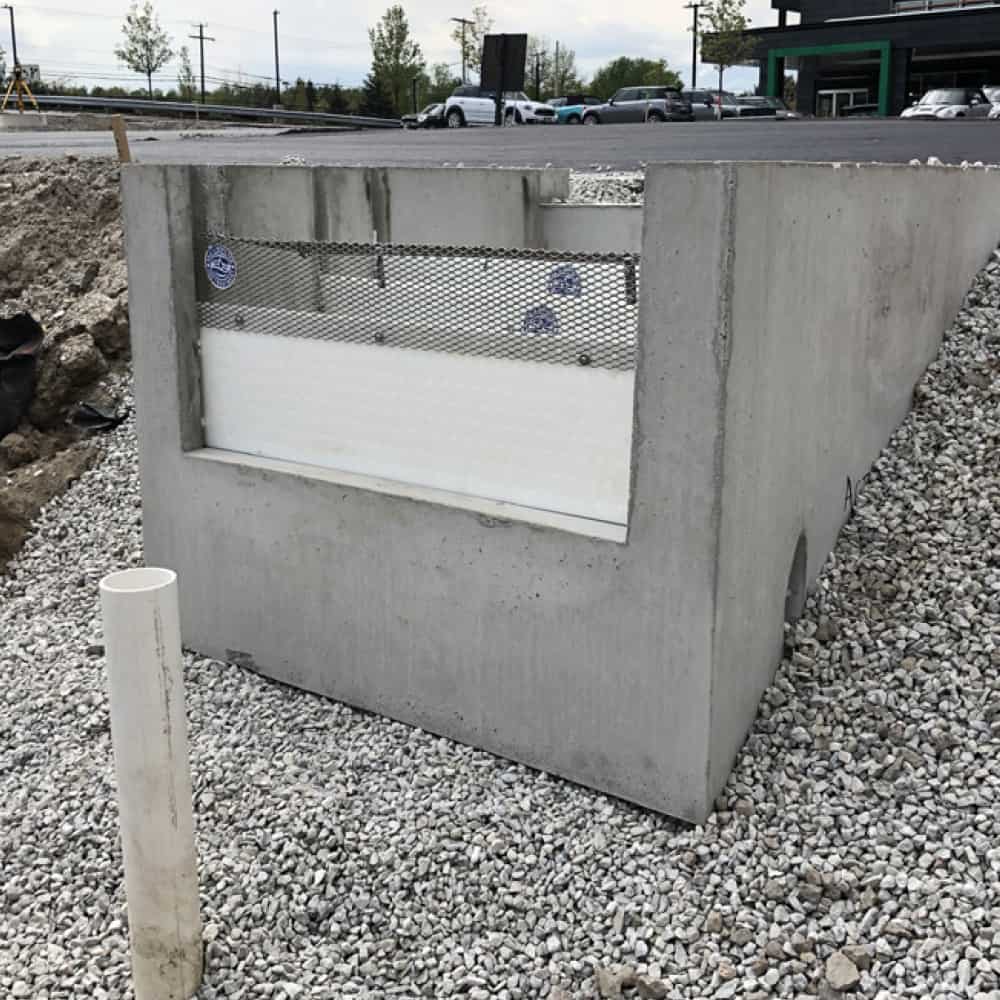 PRETX® Pretreatment System
PRETX® Pretreatment System